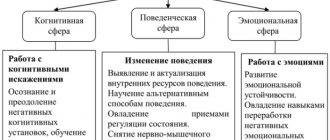Professional burnout is a special case of emotional burnout, a syndrome that develops as a result of the depletion of a person’s personal resources against the background of constant stress and fatigue associated with work. Professional burnout is a normal mental reaction to a constant level of emotional “noise.” Some researchers are of the opinion that professional burnout is a psychological reaction of adaptation to working conditions. First of all, representatives of those professions whose activities are related to communication with people, empathy and high responsibility are susceptible to this phenomenon. Moreover, the higher the emotional load and the more vulnerable the category of people with whom a person works, the faster burnout occurs. Burnout also often occurs in people with certain personality traits that are less resilient to stress. The American Christina Maslach and Susan Jackson first spoke about this syndrome in the 1970s. They identified three main components of professional burnout:
- emotional exhaustion (due to high workload and conflicts at work);
- a detached, cynical attitude towards people (arises as a defensive reaction of the psyche to emotional exhaustion), sometimes turns into dehumanization;
- underestimation of one's professional achievements, impostor syndrome.
According to the International Classification of Diseases, 10th revision, this syndrome has code Z73.0 (Overfatigue). An internal conflict between actual working conditions and desired ones (range of responsibilities, salary, inconvenient schedule) can intensify symptoms.
What is professional burnout?
Your work increasingly seems too tedious to you, you feel like a squeezed lemon and are increasingly wondering if you made a mistake in choosing a profession? Congratulations! These may be signs of professional burnout.
Content:
- What is professional burnout?
- Signs of professional burnout
- Stages of PV
- What happens to a person at different stages of the disorder
- Who's at risk
- Why does PV occur?
- How to test yourself for PV tendencies
- How to overcome PV
Professional burnout (PB) is the protection of our psyche from various unfavorable factors that affect a person in the process of work activity. This often causes chronic stress and chronic fatigue syndrome. These two conditions aggravate each other. According to experts, this is the main condition that causes professional burnout. The generally accepted theory of burnout is the three-factor model of K. Maslach and S. Jackson, which under the burnout syndrome combines a state of physical, emotional and mental exhaustion, manifested in professions in the social sphere.
Why is there stress at work? There can be many reasons: from overwork, lack of justice or decent salary, to interpersonal conflicts or the need to act contrary to one’s own conscience.
Afterword
Mental burnout is a long process, at the beginning of which a person strives to “squeeze all the juices out of himself” and find new resources. But in fact, irritation, dissatisfaction, anxiety, frustration, depression only increase, and then exhaustion, depersonalization and reduction come.
Interestingly, not only personality traits influence the development of burnout, but burnout also causes changes in personality. Due to the adaptive, but different from social norms, behavior of a burnt-out person, professional deformations arise. This is a variant of self-justification of the individual, resolution of the existing contradiction. Professional deformations are the result of a restructuring of the individual’s inner world and the emergence of new formations.
Read more about deformations in the article “Professional personality deformations: what they are, factors, signs and prevention.” And about the causes of emotional burnout in the article “Professional emotional burnout: causes and factors.”
Signs of professional burnout
Everyone experiences professional burnout in their own way. But with any disorder, the body always sends signals that should tell a person: something has gone wrong. In the case of PV, such signs also exist.
It all starts with feeling overwhelmed and disappointed with the results of your work. Whatever a person does, it seems to him that it is not enough. As a result, over time, frustration increases, anger, feelings of exhaustion and helplessness appear. If this condition is not stopped in time, emotional disorders can develop into very real illnesses.
PP can also be indicated by symptoms that, at first, may even be difficult to associate with work. However, with this disorder, many experience sleep problems, headaches, indigestion, chronic fatigue, apathy, increased blood pressure, and decreased immunity. Similar symptoms may appear against the background of ordinary fatigue. But if this is the case, then a week's vacation is enough for the employee to return to normal. And in some cases, it’s enough just to get a good night’s sleep and relax on the weekend. But if the vacation ends, and irritation, depression, reluctance to return to work and difficulties with concentration do not go away, this is real professional burnout.
How to avoid burnout
In order not to “burn out” at work, you need to follow the well-known rules of work and rest and lead a healthy lifestyle:
- drink enough water
- Healthy food
- Attend training 2-3 times a week
- sleep 7-8 hours
- go to bed and get up at the same time
- rest at least one day a week
- Don't give up your annual leave.
The famous psychologist Lyudmila Petranovskaya believes that if you are “at risk,” then it is unlikely that you will be able to completely avoid burnout. You need to be able to prevent it.
Stages of PV
Professional burnout is a complex process that does not occur suddenly, but can develop over months and even years. Domestic research on PT is based on G. Selye’s system, corresponding to the stages of stress development (3 phases). The first phase is tension - a person experiences periods of anxiety and depression, during which he experiences psychotraumatic situations related to the work performed. A feeling of dissatisfaction with oneself and professional activities appears; the person does not see a way out of the situation.
The second phase is resistance, resistance. Here a situation of saving emotions occurs, a person begins to show cynicism, there is a reduction in professional responsibilities and emotional and moral disorientation.
The third phase - exhaustion - is characterized by emotional and personal detachment, emotional decline. Psychosomatic and autonomic disorders develop.
Why can’t the psyche stand it?
Because it faces loads that altogether exceed its processing capacity. This can be compared to a fracture - the bone cannot withstand the force of a blow or fall. Or, if a person sits in an uncomfortable position for many years, then at some point the back begins to hurt, and after some time the consequences are the same as in the case of an acute injury. The psyche works thanks to the integrity of neural chains that ensure the stability of emotional reactions, and if these chains are destroyed under the influence of stress, then a person loses his usual internal supports.
That is, emotional burnout is the result of accumulated tension, which for a long time (several months, and sometimes a year) does not receive release in the form of a pause in work, communication with loved ones, or spiritual nourishment in the form of a hobby.
What happens to a person at different stages of the disorder
The first symptoms of burnout are a feeling of gradual exhaustion and increased fatigue. A weekend is not enough for a person to gain strength and stock up on energy for the next working week.
Then activity decreases, apathy appears, and the person becomes uninterested in either the affairs of the organization in which he works or the personal lives of his colleagues.
Then the first emotional reactions appear: verbal aggression towards colleagues, cynical statements, categorical denial of the opinions of others. It becomes unpleasant to work with such a person.
At the next stage, creativity and motivation to work decrease. It takes an employee more and more time to complete his usual work, and after completing it he feels more and more tired.
The emotional tension in the team due to a “burnt out” employee becomes very high. Such a person tries to avoid unnecessary contacts with colleagues; he experiences sudden mood swings: from anger to sadness. At this stage, a person himself may not yet be aware of the presence of professional burnout, but his body is already beginning to react to what is happening psychosomatically. That is, due to constant fatigue and stress, real physical disorders appear: from sleep disturbances and decreased sex drive to heart disease and digestive disorders.
The last stage of development of the disorder is especially dangerous. If nothing is done, professional burnout can cause despair, deep depression, the development of alcohol or drug addiction, and in some cases even lead to suicide.
Symptoms
For a person suffering from burnout syndrome, personal and family values fade into the background - work takes the main place in his life. When you work hard for some time, a moment inevitably comes: I still strive to do something, but nothing works out. The body, psyche and spirit are “broken” and cannot cope with the load.
In addition, the individual moves away from social life; it is not interesting to him. Depression appears, pain in the back and other parts of the body occurs, and the immune system malfunctions. Rest and vacation do not bring relief, nor does increased use of drugs and alcohol.
It should be borne in mind that CMEA does not fall on a person immediately, but a cumulative effect occurs. That is, it is impossible to wake up one morning and feel: something is wrong with me! Therefore, the patient does not immediately seek help, attributing his condition to loss of strength. But timely treatment can reduce its duration to a minimum. If you notice any of the following symptoms, immediately seek help from a specialist.
Physical symptoms:
- migraine;
- insomnia;
- loss of appetite - its disappearance or, conversely, gluttony, leading to a change in body weight;
- muscle weakness;
- dizziness;
- constant fatigue;
- sweating;
- decreased immunity;
- darkening of the eyes;
- problems with the cardiovascular system;
- increased alcohol consumption.
Psycho-emotional signs of burnout syndrome:
- inferiority complex, lack of self-confidence;
- Bad mood;
- feeling of uselessness;
- indifference;
- dissatisfaction with everyone and everything;
- collapse of one's own ideals;
- hot temper;
- loss of motivation to work;
- cynicism.
This phenomenon is similar in its manifestations to depressive syndrome, since a person feels lonely and unhappy, suffers, and cannot concentrate to perform any operation. At the same time, emotional burnout is tolerated and treated much easier than depression.
Social-behavioral symptoms:
- whining, complaining about hard work and life;
- minimizing communication with people, deliberate isolation from society;
- envy;
- anger;
- blaming others for your troubles and problems;
- the desire to withdraw from responsibility and assigned duties;
- predicting gloomy forecasts on a universal scale or smaller ones, for example, worsening weather.
If the body and mind give signals, then they should be taken seriously and not delay a visit to a psychologist.
It should be borne in mind that emotional burnout, provoked by the characteristics of professional activity, is often accompanied by chronic fatigue syndrome. Typical symptoms of the latter are fatigue, muscle pain, decreased performance and mental activity, and the inability to bear heavy loads that previously seemed normal.
Who's at risk
In the 70s of the twentieth century, when professional burnout as a disorder was just beginning to be studied, it was believed that it primarily affected representatives of professions whose work required constant contact with people. For example, medical workers, teachers, psychologists, social workers. It was believed that people in these professions exhaust themselves by giving their attention and strength to others, sympathizing with them, taking their problems to heart. But research in recent years indicates that absolutely everyone is at risk of PV. Today they talk about PV of traders, corporate employees, media, and sellers. This condition can also occur in people whose activities are not associated with a strict work schedule or in cases where a person does not formally work (students, volunteers, housewives, etc.).
This is explained by changes in the work style of modern people. The profession takes up more and more time, more and more demands are placed on employees, but at the same time, in return they are usually not provided with sufficient support or incentive to achieve higher goals. As a result, for many, work turns into a tedious routine - a set of actions that a person is obliged to repeat day after day, without getting any pleasure from it.
Nowadays, it has also become clear that burnout affects people, regardless of their age or work experience. If previously it was believed that such a disorder occurs in people after 30-40 years of age, today cases of PV are known even in 20-year-old employees. And more and more researchers are saying that in modern society, PV occurs more often in young people than in pre-retirement age people. When a certain level of psycho-emotional destabilization is reached, workers unconsciously try to secure and protect themselves. This often happens faster for younger professionals than for older workers. This phenomenon occurs because young professionals have a heavy workload and high demands, and personal expectations are also high.
However, according to experts, not all people suffer from PV equally often. Neurotic, hypersensitive people with low self-esteem, passive people, dependent on other people's opinions, and often perceiving different situations from the point of view of threat are more susceptible to burnout. In addition, according to the observations of specialists, PI often occurs in perfectionists and people in whose lives work occupies a central place. This may be why burnout occurs more often in single people than in married people. But it is impossible to say that the problem affects women or men more often: male and female representatives are equally at risk.
The first reason: age
Professional burnout syndrome can occur at any age, but most often it occurs in people aged 27 to 40 years. This is a period of time when a person undergoes a reassessment of values, a change in life priorities and guidelines. As a rule, by this age people have already managed to solve all the main problems that require significant financial expenses (buying an apartment, a car and a summer house, having children, etc.) There comes a time when professional interests fade into the background and a desire to do something appears -more interesting, for the soul. A person begins to value his personal time, he wants to have a happier, more fulfilling and interesting life, and not just earn money. Assessing his current place of work, he begins to understand that it only gives him income, but does not provide him with either satisfaction or the opportunity for professional growth.
Article on the topic
Dangerous workaholics. Is it worth staying up late at the office?
Why does PV occur?
A person who has become a victim of professional burnout is often the culprit of his disappointing state. Modern man is accustomed to putting his work above all else.
Wanting to earn more or reach higher heights, many have to sacrifice sleep, rest, time spent with family or friends. On the other hand, there are many people who are simply afraid of not being busy with something. From their point of view, being unemployed is almost the same as being unnecessary. As a result, for fear of being unnecessary, they take on more and more work, which becomes increasingly difficult to complete over time. Separately, it should be said about people who run away into work from loneliness and melancholy. They will also experience burnout sooner or later.
Many experts admit that professional burnout is often preceded by a sincere passion for work. Professional activity at the initial stage serves as a source of joy and satisfaction; a person has great hopes for his work, he is full of ambition and wants to make a brilliant career. In this case, the employee completely devotes himself to professional activities and receives genuine pleasure from it. But according to psychologists, such behavior is also not normal. This imbalance between busyness and rest (even if it does not yet cause irritation) over time has every chance of developing into PV. Whatever causes you to be overly busy, sooner or later it will lead to emotional, physical and spiritual exhaustion.
Who is at risk for burnout?
Five categories of people are susceptible to emotional burnout:
- Who are constantly in contact with others: doctors, teachers, journalists, managers, and so on.
- People who are passionate about their work.
- Those who have highly developed empathy, sensitivity, and emotional sensitivity.
- Employees who do not know how to identify, accept and manage their emotions.
- People who constantly deal with other people's pain or with routine without visible results: caring for sick family members, young children or running a household.
How to test yourself for PV tendencies
As a rule, a person notices professional burnout in himself or a colleague only when the most obvious signs of the disorder appear. But, like any other violation, it is better to prevent PV or at least stop it at the initial stage. Therefore, experts have developed several tests, the answers to which will help to diagnose the disorder in a timely manner.
Test 1
If you can apply 3 or more of the listed suggestions to yourself, this may be a signal of professional burnout.
- I feel more and more depressed.
- I get tired quickly.
- I have problems sleeping.
- I rarely feel hungry.
- It's hard for me and I'm tired.
- There was too much going on at work.
- I often feel angry and frustrated.
- In the current situation at work I feel helpless.
- I feel like no one cares about me.
- I can not go on.
Test 2
If you answer yes to at least 5 questions, you may have PV:
- Does your job seem boring to you?
- Are you now less responsible for performing professional tasks than before?
- Are you constantly tired and lose a lot of energy at work?
- Is your professional activity turning into a routine?
- Do you feel sad on Sunday just because you have to go to work tomorrow?
- Are your colleagues annoying you?
- Have you become cynical and cruel towards your colleagues, your boss and your work itself?
- Do you look at people who are happy at work with dissatisfaction?
- Are problems at work affecting your family or social life?
How to save yourself from emotional burnout
The further the burnout progresses, the more difficult it is to cope with. Therefore, it is important to start noticing it at the earliest stages. Then you will spend significantly less resources on restoration.
If you are at stages 1-2. You can cope with burnout on your own. Determine what exactly you are tired of. If fatigue is due to the fact that you worked too much, then take a long vacation (2-4 weeks), turn off all gadgets, and do not solve work issues at all.
If systemic problems in your company led to burnout, then try to report them and solve them. When the situation cannot be changed, you should think about changing jobs.
If you are at stages 3-6. Your burnout is far advanced, and most likely you already need the help of a psychotherapist. The recovery process will be lengthy and may take several months or even years. You may have to change your field of activity.
How to overcome PV
We live in a society where weakness is often perceived as a vice. But gritting your teeth and working through force in case of professional burnout is not an option. The best thing a person can do in such a situation is to try to achieve a balance between professional work and leisure.
Anyone who encounters a PV must understand that it is not unique. This happens to a variety of people: more and less successful, with extensive experience and at the initial stages of career growth. If this happens, it is important to first find someone who will serve as support. Ideally, seek help from a psychologist. Professional burnout is not a character flaw or a sign of laziness. This is a psycho-emotional disorder that needs to be gotten rid of as quickly as possible.
How to be reborn from the ashes?
- Realize and accept the situation. You're not the first person this has happened to - well, it happens. Now the main thing is to get rid of the destructive: do not feel sorry for yourself, do not cry (“Boss, everything is gone!”) but decide what to do next.
- If burnout is just beginning and you don’t want to radically change your activities, try to find new facets in your usual work . Sign up for professional training, find a coach you trust. Expand the range of your online store, attract an additional target audience, find new partners - and life will become better, life will become more interesting! If finances allow, think about how you can scale your business.
- If burnout occurs in your area of activity, it’s time to change something. Study the market, think about what business niches you are interested in, in which of them you have reliable partners and possible allies. What did you have your eye on before, but for some reason didn’t implement the idea? Where are you drawn, what is your soul, in the end? It is not at all necessary to sell your previous business - you can give it to a manager or deputy, and immerse yourself in a new project.
- Go to a psychologist. Well, seriously: if professional burnout has affected your personality and character, you have become irritable, lost interest in life - this cannot continue. Run to a specialist and get ready to work together for a long time. There is nothing wrong with visiting a psychologist - you will be able to understand yourself better and determine the main vector of further development.
Of course, it’s better not to go to the last resort. Pay attention to alarming symptoms and try to change the situation. I think if the Phoenix bird had a choice and a little more instinct of self-preservation, it would not burn itself and then be reborn from the ashes.











